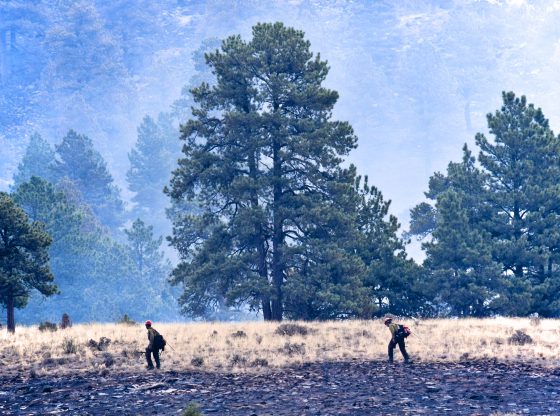Free Range Report: Colorado Congressman wants more cattle on range to mitigate wildfires
by Tom Ramstack, The Gazette | July 16, 2018
Republicans like Tipton say farmers and ranchers would protect the property, reducing fire threats and helping to protect nature. Typically, they remove invasive weeds and build stock ponds that could be used by wildlife, he said. “Some of the best custodians for public lands happen to be our ranchers”…
WASHINGTON • Colorado U.S. Rep. Scott Tipton recommended the government enlist help from ranchers and farmers to better protect federal lands during a congressional hearing this week.
Congress is considering legislation that would open hundreds of thousands of additional acres of federal land to grazing by livestock. Much of western Colorado is federally administered public land.
Livestock grazing already is permitted across large stretches of federal lands in the West. The U.S. Bureau of Land Management authorizes livestock grazing on 155 million acres, more than half of the acreage it administers. The U.S. Forest Service and U.S. Fish and Wildlife Service also already permit grazing on some of their lands.
Republicans like Tipton say farmers and ranchers would protect the property, reducing fire threats and helping to protect nature. Typically, they remove invasive weeds and build stock ponds that could be used by wildlife, he said.
“Some of the best custodians for public lands happen to be our ranchers,” Tipton, R- Cortez, said Wednesday during a hearing of the House Natural Resources subcommittee on federal lands.
Some conservationists and their Democratic supporters say the livestock would ravage the wildland, diminishing its pristine beauty and ability to support wildlife.
Tipton discussed the devastation being caused by fires raging in Colorado, particularly the Spring Creek fire, which stands as one of the worst in the state’s history.
The blaze has burned more than 110,000 acres in the Sangre de Cristo mountains between Fort Garland and Walsenburg. Other large-scale damage has come from the 416 fire north of Durango and the Divide fire near Craig.
The hearing coincides with a recognition in Congress that the government’s enormous land holdings are too difficult to maintain under current budget restrictions. In Colorado, the federal government owns about 37 percent of the state’s land.
Some members of Congress are responding by searching for alliances that would shift part of the maintenance burden to private businesses.
“How important is it to be able to use that tool and the toolbox of having responsible ranchers graze?” Tipton asked expert witnesses at the hearing.
Stefanie Smallhouse, president of the Arizona Farm Bureau, said grazing livestock would remove overgrowth of plants, grasses and trees that provide the fuel for wildfires.
“Overgrowth causes catastrophic fires,” she said. She mentioned as an example plant growth along the Colorado River watershed that has burned in recent fires.
The charred ground can prevent rainwater from seeping into the soil, thereby contributing to flooding and mudslides, according to conservationists.
“It’s imperative that we have ranchers out there managing for the public’s best interests,” Smallhouse said.
Idaho Lieutenant Governor Brad Little said farmers and ranchers could help with faster responses when fires erupt if they believe they are protecting their grazing land.
“Being a part of the solution when we have a fire is what the ranchers do,” Little said.
However, Erik Molvar, executive director of Western Watersheds Project, a Laramie, Wy.-based conservation group, said recent history shows grazing causes more harm than benefit to public lands.
“While oil and gas development garners the greatest amount of media attention, as it represents a spectacular environmental trainwreck, livestock grazing is like a slow and invisible cancer that is insidiously and inexorably killing native ecosystems over vast areas,” Molvar said in his testimony.
He cited a U.S. Bureau of Land Management analysis showing that in 2012 more than 40 percent of federal land used for livestock grazing failed to meet minimum government standards for rangeland health.
A large part of the funding for national park land maintenance comes from the Land and Water Conservation Fund, a conservation program to preserve federal lands and set them aside for public access.
On Wednesday, U.S. Sen. Cory Gardner, R-Colorado, called on Congress to provide more funding to eliminate a maintenance backlog the National Park Service estimates at $11 billion. In Colorado, national parks need more than $238 million to restore the land and infrastructure, he said.
